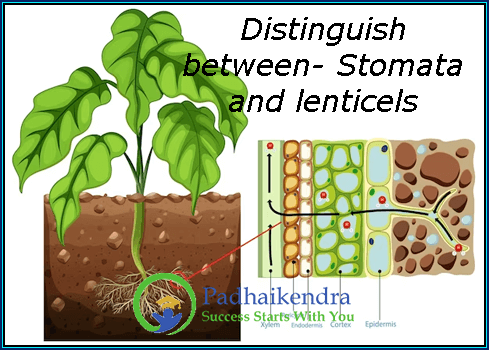Stomata and lenticels are two different structures found in plants that are involved in the gaseous exchange, but they have some differences:
- Structure: Stomata are minute openings on the surface of leaves and stems, while lenticels are raised, lens-shaped structures on the surface of woody stems and roots.
- Function: Stomata are primarily involved in the gaseous exchange, including the uptake of CO2 for photosynthesis and the release of oxygen and water vapor. Lenticels, on the other hand, are primarily involved in gas exchange in woody stems and roots, where they provide a pathway for the exchange of gases between the internal tissues and the atmosphere.
- Distribution: Stomata are present in all aerial parts of the plant, while lenticels are typically found in woody stems and roots.
- Regulation: Stomata are regulated by the guard cells, which open and close the stomatal pore in response to environmental factors such as light, temperature, and humidity. Lenticels, on the other hand, are not regulated and are always open.
- Size: Stomata are generally smaller in size, typically measuring about 10-15 micrometers in width, while lenticels are larger, ranging from a few millimeters to several centimeters in diameter.





